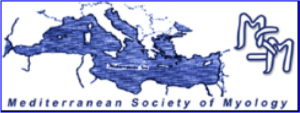LMNA gene encodes for lamin A/C, attractive proteins linked to nuclear structure and functions. When mutated, it causes different rare diseases called laminopathies. In particular, an Arginine change in Histidine in position 527 (p.Arg527His) falling in the C-terminal domain of lamin A precursor form (prelamin A) causes mandibuloacral dysplasia Type A (MADA), a segmental progeroid syndrome characterized by skin, bone and metabolic anomalies. The well-characterized cellular models made difficult to assess the tissue-specific functions of 527His prelamin A. Here, we describe the generation and characterization of a MADA transgenic mouse overexpressing 527His LMNA gene, encoding mutated prelamin A. Bodyweight is slightly affected, while no difference in lifespan was observed in transgenic animals. Mild metabolic anomalies and thinning and loss of hairs from the back were the other observed phenotypic MADA manifestations. Histological analysis of tissues relevant for MADA syndrome revealed slight increase in adipose tissue inflammatory cells and a reduction of hypodermis due to a loss of subcutaneous adipose tissue. At cellular levels, transgenic cutaneous fibroblasts displayed nuclear envelope aberrations, presence of prelamin A, proliferation, and senescence rate defects. Gene transcriptional pattern was found differentially modulated between transgenic and wildtype animals, too. In conclusion, the presence of 527His Prelamin A accumulation is further linked to the appearance of mild progeroid features and metabolic disorder without lifespan reduction.






